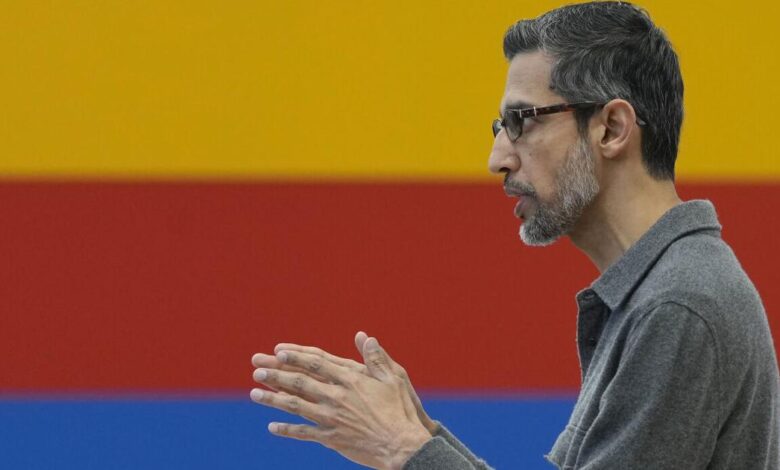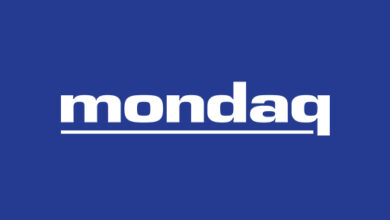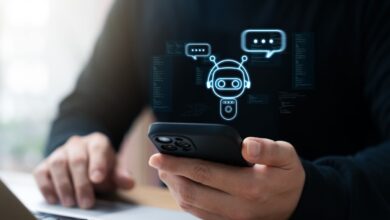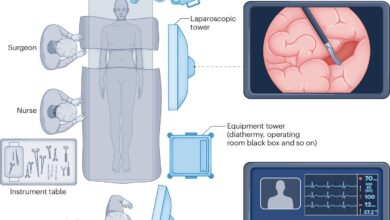Artificial intelligence now will answer Google searches

MOUNTAIN VIEW, Calif. — Google rolled out a retooled search engine Tuesday that will frequently favor responses crafted by artificial intelligence over website links, a shift promising to quicken the quest for information while also potentially disrupting the flow of money-making internet traffic.
The makeover announced at Google’s annual developers conference will begin this week in the U.S., when hundreds of millions of people will start to periodically see conversational summaries generated by the company’s AI technology at the top of the search engine’s results page.
The AI overviews are supposed to only crop up when Google’s technology determines they will be the quickest and most effective way to satisfy a user’s curiosity — a solution mostly likely to happen with complex subjects or when people are brainstorming, or planning. People still likely will see Google’s traditional website links and ads for simple searches for things like a store recommendation or weather forecasts.
People are also reading…
Google began testing AI overviews with selected users a year ago, but the company now will make it one of the staples in its search results in the U.S. before introducing the feature in other parts of the world.
By the end of the year, Google expects the AI overviews to be part of its search results for about 1 billion people.
Google CEO Sundar Pichai speaks Tuesday at a company event in Mountain View, Calif.
Google also used the packed conference at a Mountain View, California, amphitheater to showcase advances in a technology that is reshaping business and society.
The next AI steps included more sophisticated analysis powered by Gemini — a technology unveiled five months ago — and smarter assistants, or “agents,” including a still-nascent version dubbed “Astra” that will be able to understand, explain and remember things it is shown through a smartphone’s camera lens.
Google underscored its commitment to AI by bringing in Demis Hassabis, the executive who oversees the technology, to appear on stage at its marquee conference for the first time.
The injection of more AI into Google’s search engine marks one of the most dramatic changes the company made since its inception in the late 1990s. It opens the door for more growth and innovation but also threatens to trigger a sea change in web surfing habits.
“This bold and responsible approach is fundamental to delivering on our mission and making AI more helpful for everyone,” Google CEO Sundar Pichai told reporters.
Google CEO Sundar Pichai speaks Tuesday at a company event in Mountain View, Calif.
Well aware of how much attention is centered on the technology, Pichai ended nearly two hours of presentations by asking Google’s Gemini model how many times AI was mentioned. The count: 120, and then the tally edged up by one more when Pichai said, “AI,” yet again.
The increased AI emphasis will bring new risks to an internet ecosystem that depends heavily on digital advertising as its financial lifeblood.
AI overviews could undercut ads tied to Google’s search engine — a business that reeled in $175 billion in revenue last year alone. Website publishers also will be hurt if the AI overviews result in fewer clicks on website links lower on the results page.
Based on habits during the past year’s testing phase of Google’s AI overviews, about 25% of the traffic could be negatively affected by the de-emphasis on website links, said Marc McCollum, chief innovation officer at Raptive, which helps about 5,000 website publishers make money from their content.
That could mean billions of dollars in lost ad revenue, a devastating blow that would be delivered by a form of AI technology that culls information plucked from many of the websites that stand to lose revenue.
From giving advice and analyzing graphs to guiding someone through a math equation and even cracking a joke, the new model of ChatGPT, called GPT-4o, is touted as having real-time responses in natural human tone.
“The relationship between Google and publishers has been pretty symbiotic, but enter AI, and what has essentially happened is the Big Tech companies have taken this creative content and used it to train their AI models,” McCollum said. “We are now seeing that being used for their own commercial purposes in what is effectively a transfer of wealth from small, independent businesses to Big Tech.”
But Google found the AI overviews resulted in people in conducting even more searches during the testing “because they suddenly can ask questions that were too hard before,” Liz Reid, who oversees the company’s search operations, said during an interview. She declined to provide specific numbers about link-clicking volume during the tests of AI overviews.
“In reality, people do want to click to the web, even when they have an AI overview,” Reid said. “They start with the AI overview and then they want to dig in deeper. We will continue to innovate on the AI overview and also on how do we send the most useful traffic to the web.”
Liz Reid, Google head of Search, speaks Tuesday at a company event in Mountain View, Calif.
The increasing use of AI technology to summarize information in chatbots such as Google’s Gemini and OpenAI’s ChatGPT already raised legal questions about whether the companies behind the services are illegally pulling from copyrighted material to advance their services. It’s an allegation at the heart of a high-profile lawsuit The New York Times filed late last year against OpenAI and its biggest backer, Microsoft.
Outside of the amphitheater, several dozen protesters chained themselves to one another and blocked an entrance to the conference. Demonstrators targeted a $1.2 billion deal known as Project Nimbus that provides AI technology to the Israeli government. They contend the system is being lethally deployed in the Gaza war — an allegation Google refutes.
Millennials are the largest adopters of AI tools—for fun, not work
Millennials are the largest adopters of AI tools—for fun, not work
Artificial intelligence is seeing traction among the largest generational contingent in the U.S. workforce: millennials. And they may not be using it just to boost productivity at work.
Verbit analyzed Morning Consult survey data published in 2024 to illustrate how millennials interact most with emerging AI tools. Morning Consult polling suggests millennials are more active users of AI tools than even Gen Z. Respondents said they are about 20 percentage points more likely to use AI for work tasks when compared with overall user responses. But they also indicated they’re slightly more likely to use it for leisure or creative pursuits than work.
AI is found today not just in the generative AI chatbots like ChatGPT that have invaded workplaces and popular culture. It’s also embedded in the algorithms that power recommendations in music and television streaming apps, financial investment services, productivity software like Microsoft Excel, conversation transcription tools, and those that assist in writing code.
With more than a year of experimentation under their belts since the release of ChatGPT and the wave of AI software that followed, the appeal to millennials of using new AI-infused software for work is nearly on par with using it for entertainment recommendations.

Millennials make up the bulk of the workforce and are AI’s early power users
True artificial intelligence, called artificial general intelligence or AGI, refers to software that displays a level of intelligence indistinguishable from that of a human. Experts agree that true AI is a ways off. However, today’s AI-infused software is still powerful enough to significantly augment workers in many white-collar jobs—and even replace them in some limited cases like customer service functions.
Millennials’ equal propensity to use AI for entertainment or work may speak to the entertainment consumption habits of those aged 28-43. But, it could also be representative of the anxiety the proliferation of new AI tools has caused in the larger workforce.
While not yet capable of AGI, the current capabilities of AI have thus far been strong enough to generate significant apprehensiveness about job displacement. White-collar work was long thought to be immune from early forms of automation, which mainly displaced manual labor jobs with the assistance of robotic technology in warehouses and on factory floors.
And even though polling indicates nearly half of AI’s current users are leveraging the tools at work, other indicators show it hasn’t come without compounded stress.
About two-thirds of workers say they are concerned about AI replacing their jobs, and an equal portion say they fear falling behind in their jobs if they don’t use it at work, according to a 2023 survey developed by Ernst & Young to gauge worker anxiety around business’ adoption of AI.
While the future of AI—and how big of a threat it poses for workers—remains to be seen, a new report from corporate advisory firm Gartner provides an optimistic view running counter to worker anxiety. The 2024 report forecasts that generative AI adoption within corporate workplaces could slow in the coming years as organizations are hit with the reality of the costs it requires to fully train AI models, as well as the looming intellectual property challenges making their way through courts.
Story editing by Nicole Caldwell. Copy editing by Kristen Wegrzyn.
This story originally appeared on Verbit and was produced and distributed in partnership with Stacker Studio.



